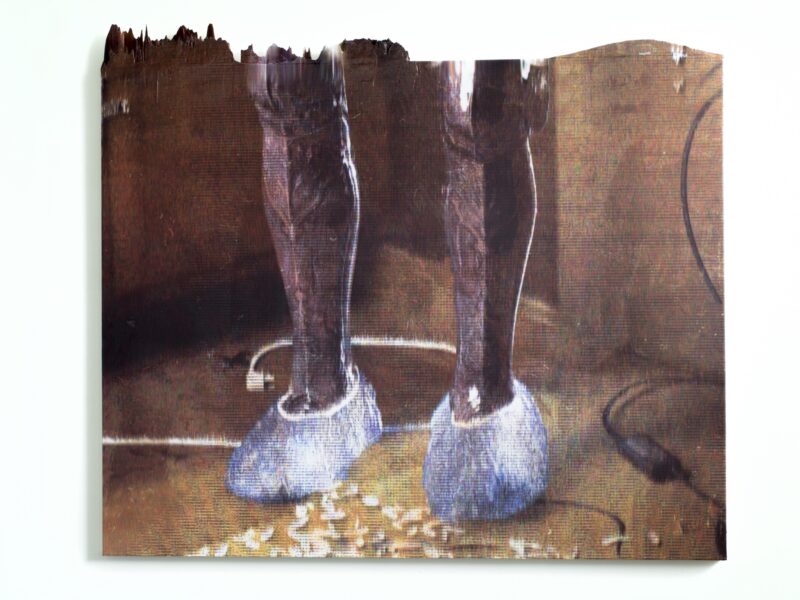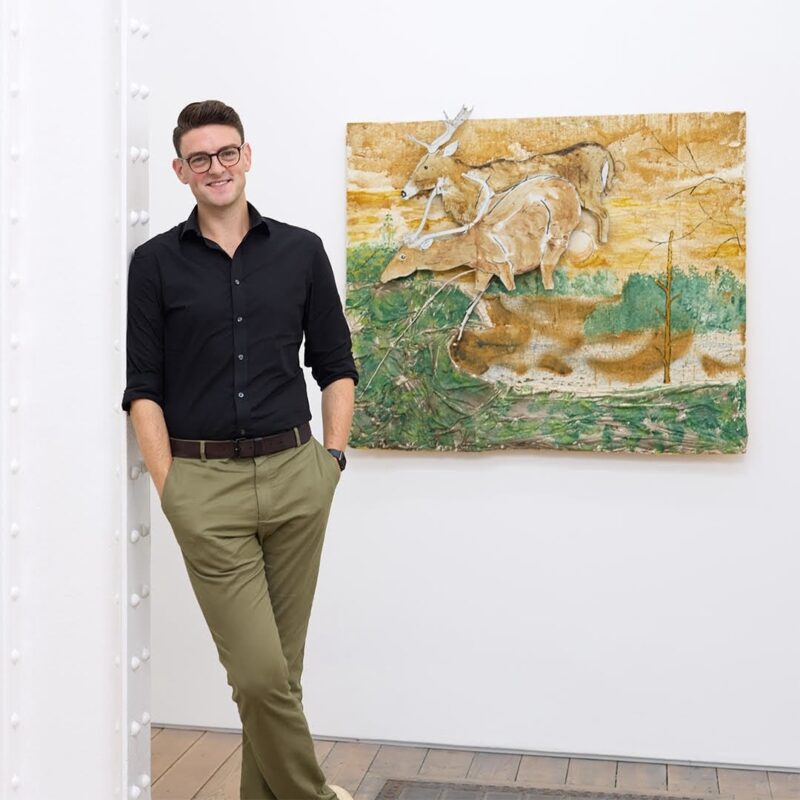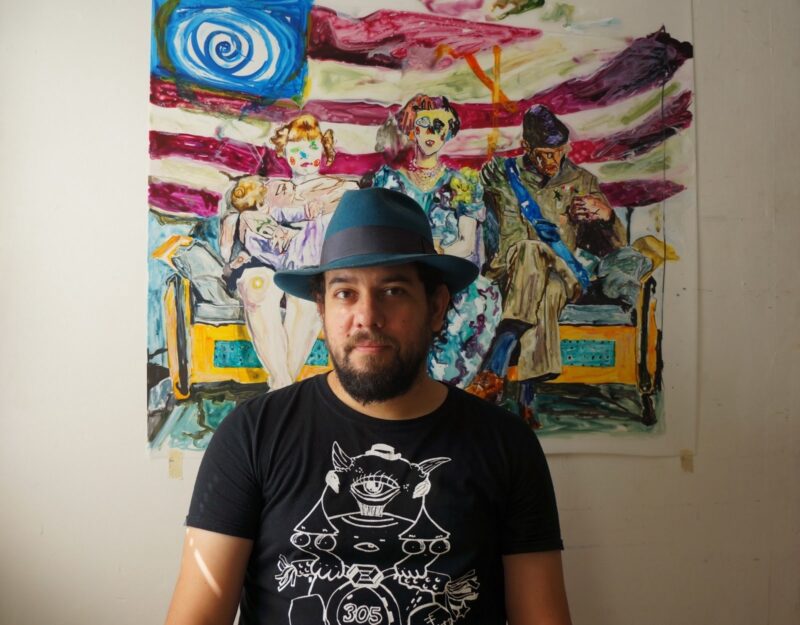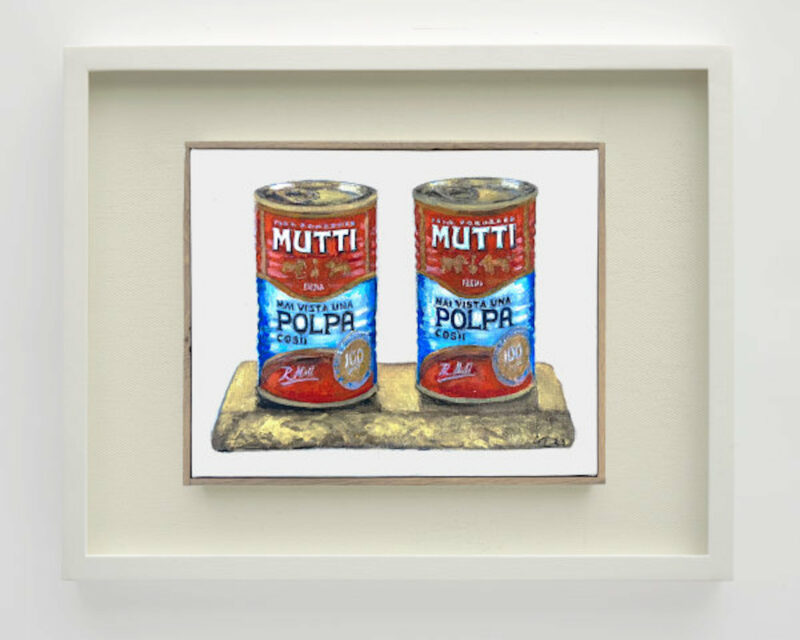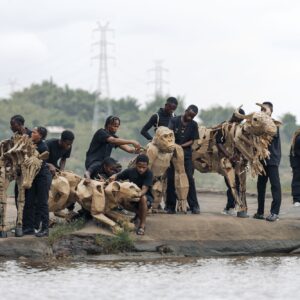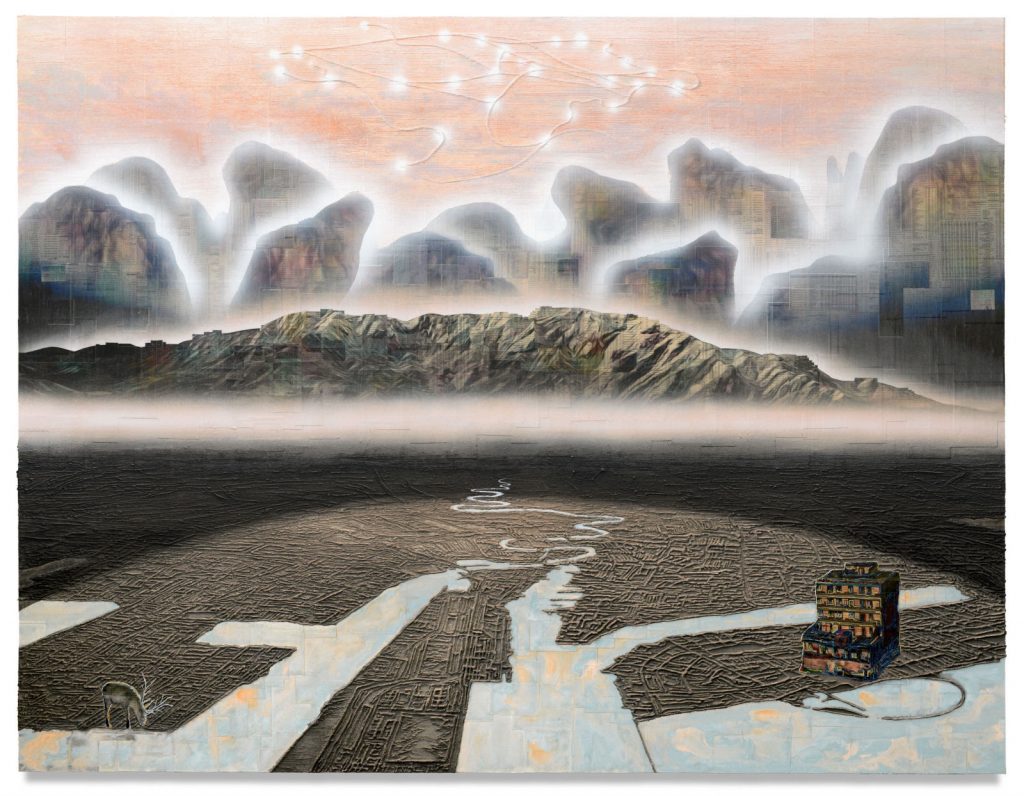
Megalopolis, 2020, newspaper, archival inkjet, sand and acrylic on canvas, 150 x 200 cm / 59 1/8 x 78 3/4 in
Gordon Cheung’s fourth solo show with Edel Assanti, Tears of Paradise is the latest in a series in which Cheung witnesses and interprets the emergence of China as a twenty-first century global superpower, framing current events in the context of the “Century of Humiliation” and the opium wars.
Five paintings in Tears of Paradise depict aerial perspectives of real and part prophetic landscapes, each relating to specific sites in China that collectively comprise the largest infrastructural project in human history. The sprawling cityscapes are rendered from satellite imagery, built up as reliefs on the canvas in hardened sand and pigment.
The works map the administration’s planned consolidation of some of the world’s largest cities into several inconceivably large megalopolises. In one work, the cities of Beijing, Tianjin and Hebei float like drifting islands, inviting contemplation of the future city of “Jing-Jin-Ji” – with a population of 100 million residents in an area larger than Britain. These sites are depicted in a state of flux – pieces in a monumental puzzle of centralised state planning designed to bolster and sustain the Chinese economic miracle.
Cheung’s paintings blend real and foreseen events to articulate the speed and complexity of change, constantly weighing human costs. Suspended in the middle of the gallery is a monumental sculptural installation, entitled Home. Made from financial newspaper and bamboo, Cheung’s window installation refers to homes in China with traditional window designs that were demolished for rapid urbanisation. The sculpture hovers between states of being, suggesting a ghost architecture that would have supported the windows. The visitor is pulled back down to ground level from the god-like, macro perspective of the paintings. The windows act as a demarcation between the march of unstoppable progress, and the framework of identity, history and culture that define the individual; in Tears of Paradise, we are left pondering the greatest paradigm shift the world has ever seen from each point of view.
Gordon Cheung: Tears of Paradise Private view: 6-8pm, Thursday 16th January 2020
Exhibition dates 17th January – 7th March 2020 Gordon Cheung in conversation with Mark Rappolt: Wednesday 19th February, 7pm RSVP eve@edelassanti.com to reserve a seat (free but limited spaces)
About The Artist
Cheung graduated from Central Saint Martins in 1998, completing an MA at the Royal College of Art in 2001. Solo exhibitions include Home at Galerie Huit, Hong Kong, 2018; New Order Vanitas at Ann Norton Sculpture Gardens, USA, 2017; Gordon Cheung at The Whitaker, UK, 2017; Here be Dragons at Nottingham Castle Museum (2016); Lines in the Sand at Leila Heller Gallery Dubai (2016); Altered States at the Arizona State University Art Museum (2010), The Four Horsemen of the Apocalypse at the New Art Gallery Walsall (2009); The Promised Land at Jack Shainman Gallery (2009). Cheung’s work features in numerous public collections worldwide, including Asian Art Museum of San Francisco, The British Museum, The Hirshhorn Museum and Sculpture Garden, Hood Museum of Art, Minneapolis Institute of Art, The Museum of Modern Art, San Antonio Museum of Art, Speed Art Museum, The Whitworth Art Gallery, Arizona State University Art Museum and The Yale Center for British Art. Cheung lives and works in London.
